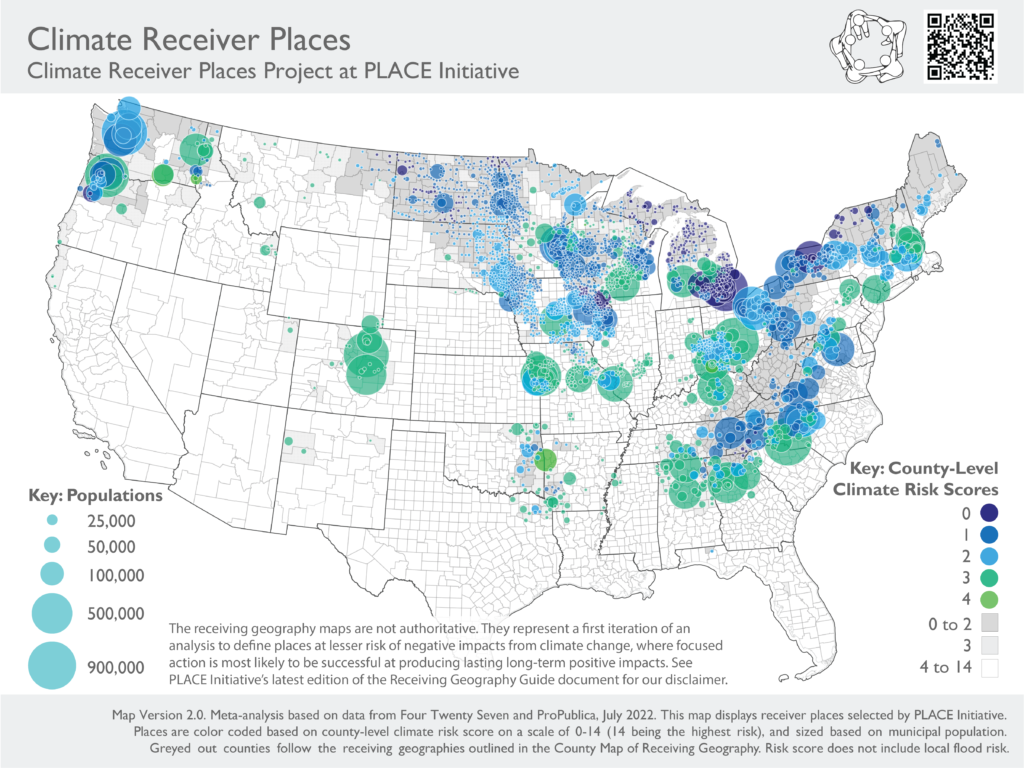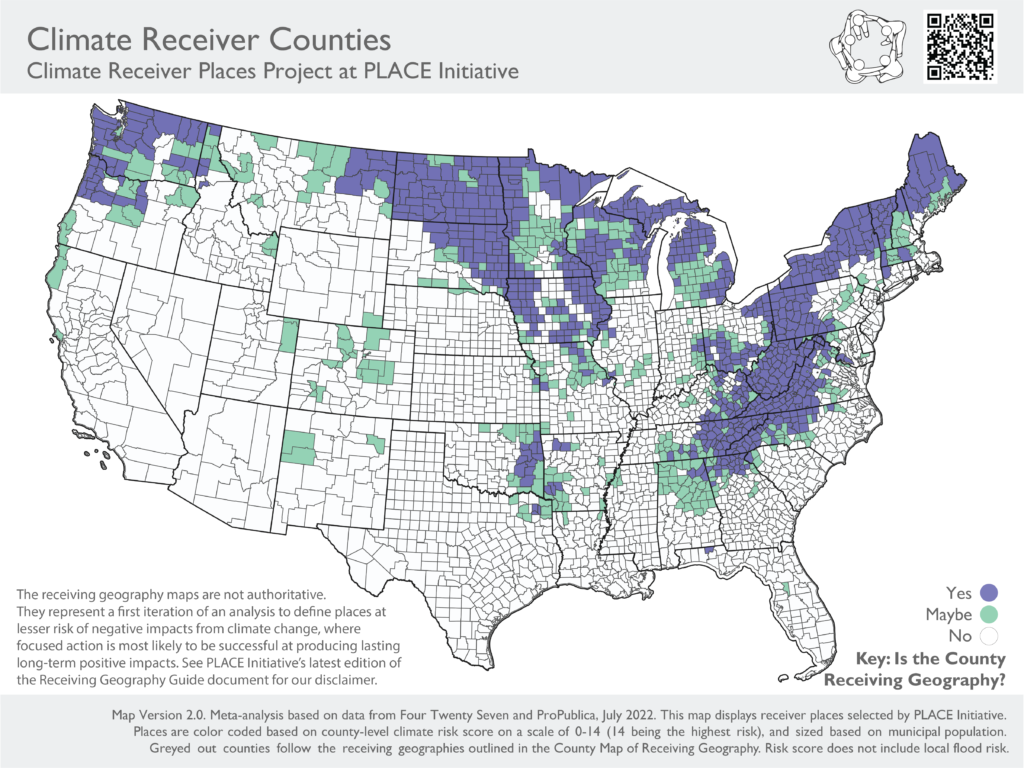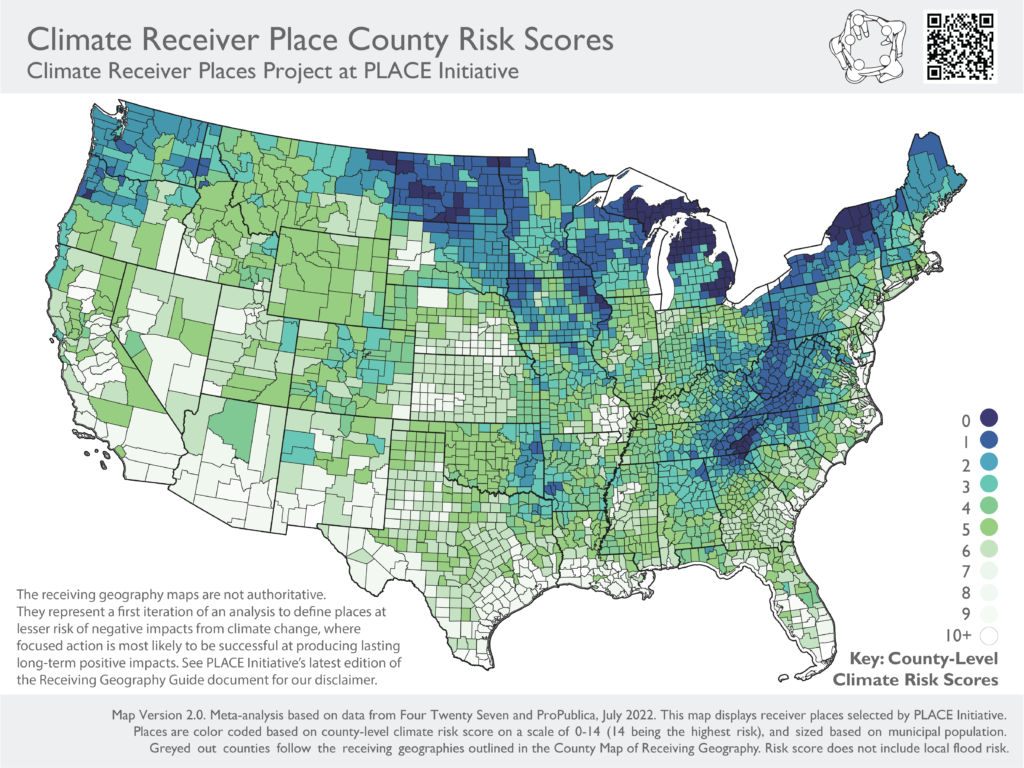Section 01 of the Receiver Places
The receiving geography maps are not authoritative; they represent a first iteration of an analysis to define places at lesser risk of the negative impacts from climate change, where focused action is most likely to be successful at producing lasting long-term positive impacts.
The Receiver Places mapped places of lowest climate risk, best-situated for receiving climate migrants & adapting. Many moderate-risk & intermediate receiver places exist too, but beyond our primary scope. These places are just as crucial for the future.

Download or View Documents Below
Goal
The goal of Receiver Places is to build an in-depth guide for adaptive, resilient, and equitable local governance for communities on the receiving ends of climate change migration. We will use the Climate Receiver Places Guide that we create to work with communities in climate-resilient geographies to promote and implement climate-resilient urbanism.
The Receiving Geography Guide
The Receiving Geography Guide is the first in a series of three documents and one assessment tool that make up the Climate Receiver Places Guide.
Through a meta-analysis, we have determined regions with relatively low climate change risk exposure in the continental United States. From here, we factored in localized flooding risk and well-connected infrastructure systems that lend themselves well to building resilient communities. Places with low localized flood risk and the right spatial structure, sitting within low-risk regions, were added to this list of climate receiver places. Within PLACE Initiative’s Resiliency & Adaptation Resource Sheet, these communities mostly fall under category one, and sometimes under category two.
These selected geographies are not necessarily already adapting successfully to climate change. Rather, they are geographies with the potential to successfully do so, provided they follow our Community Principles Guide.
The document and supplementary materials are linked above.



What’s Next?
Next, take a look at the Community Principles Guide

